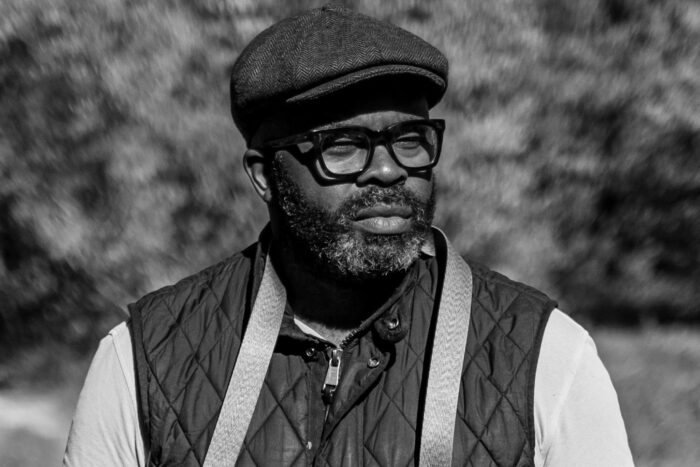The goal in Web3 is to stay ahead of the curve. Whether you’re a trader trying to buy low and sell high, a creator working to get in on the ground floor of a new trend, or an art collector looking to secure works before an artist rises to prominence, being early earns you both financial gains and community prestige.
Of course, “winning” in Web3 is sometimes simply a case of good fortune. The collector who just happens to mint the rarest unrevealed NFT in a PFP collection surely does so with little insight into the future. That said, there are many impressive people like Cherie Hu, Misan Harriman, and Brendan Playford. Rather than just looking into the future, they are helping shape and create it creating.
So, who better to answer the number one question on every NFT enthusiast’s mind: What does the future hold for NFTs?
Cherie Hu

Cherie Hu is an award-winning journalist who examines the intersection of music, media, and technology. She is also the creator of Water & Music, a popular newsletter that highlights innovation in music and technology. Over time, the newsletter evolved to include a research DAO, which is aimed at giving individuals in the music industry the information they need to keep pace with advances in blockchain, NFTs, and related technologies.
Hu said she thinks that, over time, people in Web3 will feel less ashamed and guilty about collaborating with — and drawing inspiration and wisdom from — traditional music industry veterans. She also explained that this transition will be a net good, as Web3 music is currently faced with a problem.
“Almost every artist I know who is working in Web3 is struggling to maintain, let alone grow, a cohesive identity across Web3 platforms,” she said in an interview with nft now. “There are so many shiny objects still popping up on a weekly basis […] further fragmenting as opposed to streamlining the NFT landscape as a whole. At the same time, maintaining a cohesive brand identity and fan experiences across social and commerce platforms has been a problem that artists in non-Web3 spaces have faced — and many have successfully combatted — for decades,” she said. “So, I think Web3 artists have a lot to learn from seasoned marketers in the traditional music industry when it comes to marketing tactics that do and don’t work.”
Aside from the need to take a page from mavericks of the past in order to chart a way forward in Web3 music, Hu spoke to the potential of technologies other than NFTs to significantly impact the music industry. When discussing the current artificial intelligence (AI) boom taking place across creative industries, she said she believes that the friction between having an idea and manifesting that idea in the form of a creative work will essentially go down to zero.
“[AI] dramatically increases the playing field of who can be an ‘artist,’ in the sense of being an active participant in the music economy. Industry professionals should be on the lookout not just for the existential questions that come from this landscape expansion but also for the very real operational challenges this will present from a data ingestion and rights management perspective,” said Hu. “Traditional rights holders are already struggling under the weight of the increased amount of consumption data to parse coming in from social platforms like TikTok, and the higher volume of songs created and released using AI will only exacerbate this problem.”
As for how AI relates to Web3 and the blockchain, Hu expressed concern surrounding the legal gray area emerging about who should be credited and compensated for AI-generated artworks, saying she anticipates increasing demand for verification technology that can confirm whether a certain work is AI-generated, and if so, who pushed the “create” and/or “distribute” button.
“I would argue the NFT ecosystem is still being led by independent artists today…”
When it comes to Web3 projects, products, and platforms, Hu says that the biggest returns will be realized by those who build with independent artists and positive artist/collector relationships in mind. She explained that this is because Web3’s staying power comes from its ability to empower independent artists and allow a diverse range of creators to find prosperity.
“I would argue the NFT ecosystem is still being led by independent artists today, if you follow the money of who is earning the most from NFT drops, as well as who is setting a precedent and being the first mover when it comes to establishing new use cases around the technology,” said Hu. “With larger bear-market conditions, there seems to be a shift in mindset and focus from ‘just getting one’s NFT bag no matter what’ to going back to technical fundamentals and trying to build a solid product and artist/collector experience from the ground up.”
Misan Harriman

To social activist and photographer Misan Harriman, a tremendous amount of work still lies ahead if Web3 is to properly uplift creators. Harriman, who has become well-known for his photographs of the Black Lives Matter movement and for being the first Black man to shoot a cover for Vogue UK in the magazine’s 104-year history, has emerged as a champion of Tezos NFTs and as a prominent proponent of diversity and inclusion in Web3. He also founded Culture3, an organization dedicated to educating people about the empowering nature of the blockchain for artists and collectors.
To bring about a more equitable future for Web3, Harriman says that, beyond placing a focus on Black and Brown individuals, the NFT space must ensure that everyone can find support and community.
“My thoughts are quite simple: there is hardly any representation and inclusion, and I rarely see anyone that looks like me in this space,” Harriman said in an interview with nft now. “I certainly don’t hear anyone that has much of a different accent outside of European or North American. And I know most of the liquidity lies in the hands of, usually, cis white males.”
And if we are to ever get to a more equitable space where creators are uplifted, Harriman says the space will need to carefully consider the people who occupy the upper echelons of Web3.
“People that worship different gods, people that have visible and invisible disabilities, and women are hugely underrepresented in this ecosystem,” said Harriman. “So if we are all going to make it, we have to be careful who our kings and queens are, and make sure that they have the right moral compass and enough of the lived experience to understand that, as we climb, we must lift those in need of this technology more than ourselves.”
Ultimately, Harriman says the biggest winners will be those builders who realize that Web3 technologies are about far more than art and collectibles.
“I think [blockchain tech] will have a very big impact above and beyond the obvious music, film, celebrity, sports, and gaming that we talk about.”
“What can [smart contract technology] do for immigration and identifying people in a world that is in a migrant crisis? What is it going to do in education and schooling? How can we store data that is irrevocable that could be useful for students that are living in places where it is hard to keep records, i.e., a conflict zone,” said Harriman. “I think [blockchain tech] will have a very big impact above and beyond the obvious music, film, celebrity, sports, and video gaming that we always talk about. The less, sort of, shiny things is where this technology can have the most impact.”
Brendan Playford

Brendan Playford, a longtime blockchain proponent and co-founder of Masa Finance, has emerged as a central figure in the discussion for more meaningful forms of NFT utility, like what is achievable with Soulbound Tokens (SBTs), an innovation Vitalik Buterin proposed in a white paper early in 2022. Like Harriman, Playford says that these novel uses of blockchain and NFT technologies will have a more significant impact than the creative industries currently being forged in Web3.
“Vitalik’s vision was quite far in the future. If you read [his whitepaper], it’s pretty much painting a multi-year, if not a decade-long type picture to get there,” Playford said in an interview with nft now. “The big questions in Vitalik’s paper were: Is data private? Is it public? How do you not dox yourself? How do you share data with a party and only have that single party find it,” said Playford. Ultimately, he feels that these questions will be answered by SBTs.
“What we at Masa thought was. ‘Okay, with what we’ve built so far, using nontransferable NFTs (SBTs), we can accelerate this vision to today. And we can start actually putting the initial point of this vision into the hands of people that can get value immediately.”
This utility will ultimately lead to much more mainstream adoption, and Playford predicts that this adoption will primarily come from younger generations.
“In my mind, [future] users are going to be 14 to 18-year-olds who are going to grow into the next cycle as Web3 natives.”
“What I see as the vision for Web3 is: At the end of this cycle, right now, we’ll have five to six million DeFi wallets. […] If we think the next cycle could go to 50, or say 500 million, that big inflection point, where are those users going to come from,” said Playford. “In my mind, those users are going to be 14 to 18-year-olds who are going to grow into the next cycle as Web3 natives. These are individuals that are very familiar with the metaverse. They are heavy gamers who interact via the internet almost exclusively. And those users are going to come into cryptocurrency very early on, instead of a bank account.”


